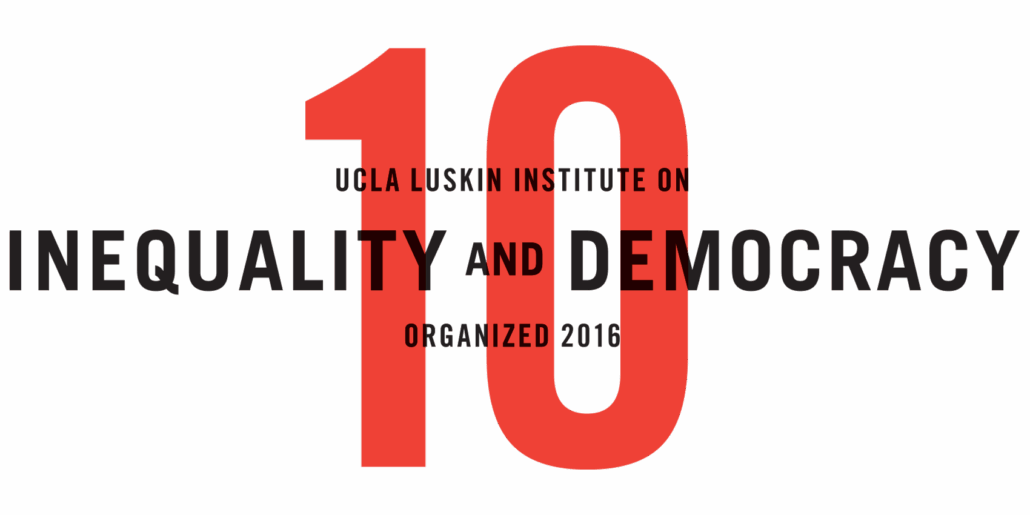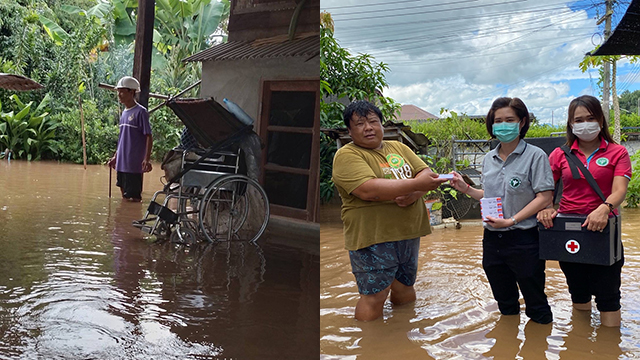Flooding in Sanpatong, Chiangmai, Thailand (left) and healthcare staff at primary care health units delivering necessary medicine (right). Image credit: Sanpatong Primary Care Health Units
Case Study of Strategies to Decrease Flood Impacts on Health in SanPaTong District, Chiang Mai Province, Thailand
Wei-Ti Chen, UCLA School of Nursing
Background
Large floods in northern Thailand typically occur during the monsoon season, which lasts from May to October. These floods are often triggered by storms associated with tropical depressions that originate from typhoons in the South China Sea and then move westward across the Indochina Peninsula. As these depressions move eastward, they bring intense rainstorms, with rainfall ranging from 100 to 200 mm per day, particularly in the mountainous regions. According to the Global Facility for Disaster Reduction and Recovery (GFDRR), Chiang Mai faces high river flood hazards with a frequent risk of potentially damaging and life-threatening conditions. Due to climate change, there has been an increase in the frequency and intensity of heavy precipitation days, leading to a rise in extreme rainfall events. This exacerbates the existing flood hazard level, making it even more critical to manage and mitigate the risks associated with these floodings. Given that Thailand is one of the top 10 countries at risk of flooding, and individuals with chronic diseases are among the most vulnerable to adverse effects of flooding, it is critical to consider this population’s lived experiences when designing flood mitigation strategies for healthcare.
Flooding has detrimental effects on care access and engagement particularly among patients with long-term health care needs. Floods can damage public infrastructures critical for day-to-day operations of any community, overwhelm emergency medical services to the affected population, and create barriers to those with immediate survival needs. People with chronic diseases who experience flooding are vulnerable to significant impacts to their treatment access and care engagement. To successfully adhere to medication and treatment plans, patients need to have timely access to, as well as fully engage in, all steps across the treatment continuum from lab testing, linkages to care, care retention, and to adherence. However, all these steps require sufficient institutional support and considerable commitment and effort by individuals to manage barriers to their care access and engagement. Once flooding interrupts the functioning of healthcare service organizations and the daily routines of patients, care access and engagement in their treatment continuums suffer. Unfortunately, Thailand is one of the top at-risk countries for floods. The climate changes over the past three decades have exacerbated flood emergencies.
Lessons Learned
No data are available to provide insights into what flood-related challenges to the care continuum are faced by Thai patients during and after flooding. This knowledge gap hinders efforts to develop inclusive and effective strategies to mitigate health threats that are attributable to flooding, a serious type of natural disaster across Southeast Asia that has been exacerbated by climate change. In fact, patient needs have often omitted from disaster management plans both at the national level and international levels in Southeast Asia. Therefore, this case study will shed light on how San Pa Tong Distract in Chiang Mia Province has adapted to flooding, findings that can be extended to other resource-limited regions.



